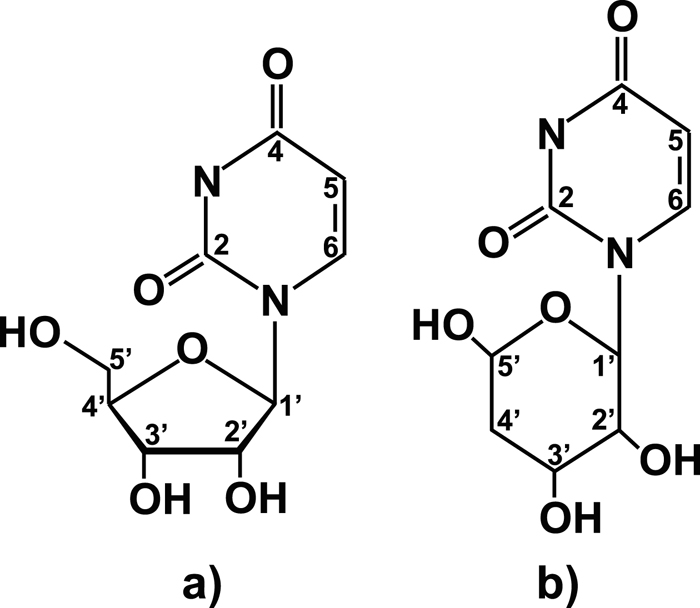当前位置:
X-MOL 学术
›
J. Chem. Phys.
›
论文详情
Our official English website, www.x-mol.net, welcomes your
feedback! (Note: you will need to create a separate account there.)
Gas-phase study on uridine: Conformation and X-ray photofragmentation
The Journal of Chemical Physics ( IF 3.1 ) Pub Date : 2015-05-19 13:27:19 , DOI: 10.1063/1.4919878 Eero Itälä 1 , Kuno Kooser 1 , Elisabeth Rachlew 2 , Helena Levola 1 , Dang Trinh Ha 1, 3 , Edwin Kukk 1, 4
The Journal of Chemical Physics ( IF 3.1 ) Pub Date : 2015-05-19 13:27:19 , DOI: 10.1063/1.4919878 Eero Itälä 1 , Kuno Kooser 1 , Elisabeth Rachlew 2 , Helena Levola 1 , Dang Trinh Ha 1, 3 , Edwin Kukk 1, 4
Affiliation

|
Fragmentation of RNA nucleoside uridine, induced by carbon 1s core ionization, has been studied. The measurements by combined electron and ion spectroscopy have been performed in gas phase utilizing synchrotron radiation. As uridine is a combination of d-ribose and uracil, which have been studied earlier with the same method, this study also considers the effect of chemical environment and the relevant functional groups. Furthermore, since in core ionization the initial core hole is always highly localized, charge migration prior to fragmentation has been studied here. This study also demonstrates the destructive nature of core ionization as in most cases the C 1s ionization of uridine leads to concerted explosions producing only small fragments with masses ≤43 amu. In addition to fragmentation patterns, we found out that upon evaporation the sugar part of the uridine molecule attains hexagonal form.
中文翻译:

尿苷的气相研究:构象和X射线光碎裂
已经研究了碳1s核心电离引起的RNA核苷尿苷的片段化。通过电子和离子光谱相结合的测量已经在气相中利用同步加速器辐射进行。由于尿苷是d-核糖和尿嘧啶的组合物,已通过相同的方法进行了较早的研究,因此本研究还考虑了化学环境的影响和相关的官能团。此外,由于在核心电离中,初始核心孔始终高度局限,因此在此研究了碎裂之前的电荷迁移。这项研究还证明了核电离的破坏性,因为在大多数情况下,尿苷的C 1s电离导致协同爆炸,仅产生质量≤43amu的小碎片。除了碎片模式之外,
更新日期:2015-05-20
中文翻译:

尿苷的气相研究:构象和X射线光碎裂
已经研究了碳1s核心电离引起的RNA核苷尿苷的片段化。通过电子和离子光谱相结合的测量已经在气相中利用同步加速器辐射进行。由于尿苷是d-核糖和尿嘧啶的组合物,已通过相同的方法进行了较早的研究,因此本研究还考虑了化学环境的影响和相关的官能团。此外,由于在核心电离中,初始核心孔始终高度局限,因此在此研究了碎裂之前的电荷迁移。这项研究还证明了核电离的破坏性,因为在大多数情况下,尿苷的C 1s电离导致协同爆炸,仅产生质量≤43amu的小碎片。除了碎片模式之外,





















































 京公网安备 11010802027423号
京公网安备 11010802027423号